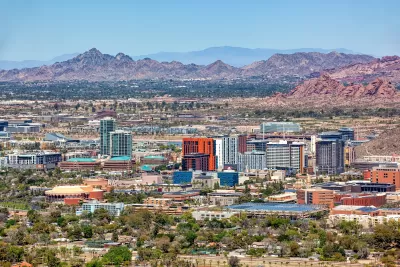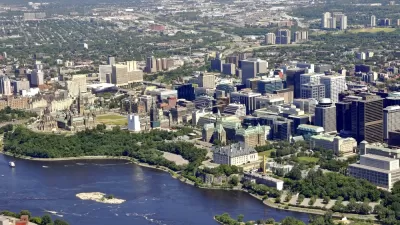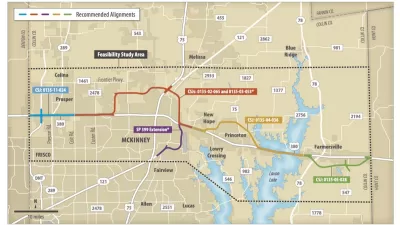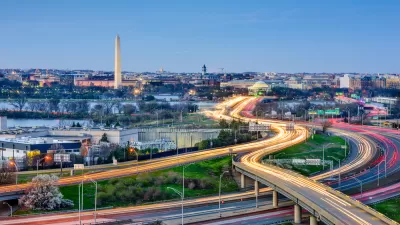Tempe planners are preparing a General Plan update scheduled for voter approval in March 2024.

Tempe, Arizona is expecting to grow in population by 38% by 2060—from 167,400 residents in 2022 to 269,700. Neighboring cities are expecting similar rates of growth of the time period, too, with Neighboring cities show projected increases as well, with Phoenix expecting a 28% increase Mesa increasing by 18%.
Those population estimates figure prominently in Tempe’s ongoing General Plan update process. Voters are expected to consider the Tempe Tomorrow: General Plan 2050 in March 2040.
A paywalled article by Caroline Yu for the Daily Independent documents some of the big issues at play for the General Plan process, including the aforementioned population growth, as well as transportation projects, economic resilience, and water conservation.
Here is a sample of Yu’s report on these issues:
- On transportation: “But City Traffic Engineer Cathy Hollow says it’s difficult to give an exact answer about how transportation will evolve over the next 30 years, especially as the city just begins to update its transportation plan to guide the city’s transportation projects.”
- On economic resilience: “Anticipating an increase in its workforce and general population, Tempe doesn’t expect to have issues with residents finding jobs. Still, its continued struggle with housing could prevent people from living and working in the city.”
- On water conservation: “Going forward, the city is investing millions into water resources and infrastructure along with making the most of its existing water portfolio. It’s also in the process of rehabilitating the Kyrene Water Reclamation Plant to increase the reuse of reclaimed water.”
FULL STORY: Tempe’s collaborative plan for a growing population

Manufactured Crisis: Losing the Nation’s Largest Source of Unsubsidized Affordable Housing
Manufactured housing communities have long been an affordable housing option for millions of people living in the U.S., but that affordability is disappearing rapidly. How did we get here?

Americans May Be Stuck — But Why?
Americans are moving a lot less than they once did, and that is a problem. While Yoni Applebaum, in his highly-publicized article Stuck, gets the reasons badly wrong, it's still important to ask: why are we moving so much less than before?

Using Old Oil and Gas Wells for Green Energy Storage
Penn State researchers have found that repurposing abandoned oil and gas wells for geothermal-assisted compressed-air energy storage can boost efficiency, reduce environmental risks, and support clean energy and job transitions.

Updating LA’s Tree Rules Could Bring More Shade to Underserved Neighborhoods
A new USC study finds that relaxing Los Angeles’ outdated tree planting guidelines could significantly expand urban tree canopy and reduce shade disparities in lower-income neighborhoods, though infrastructure investments are also needed.

California's Canal Solar Projects Aim to Conserve Resources and Expand Clean Energy
California’s Project Nexus has begun generating electricity from solar panels installed over irrigation canals, with researchers and state agencies exploring statewide expansion to conserve water and boost clean energy production.

HHS Staff Cuts Gut Energy Assistance Program
The full staff of a federal program that distributes heating and cooling assistance for low-income families was laid off, jeopardizing the program’s operations.
Urban Design for Planners 1: Software Tools
This six-course series explores essential urban design concepts using open source software and equips planners with the tools they need to participate fully in the urban design process.
Planning for Universal Design
Learn the tools for implementing Universal Design in planning regulations.
Heyer Gruel & Associates PA
City of Moreno Valley
Institute for Housing and Urban Development Studies (IHS)
City of Grandview
Harvard GSD Executive Education
Salt Lake City
NYU Wagner Graduate School of Public Service
City of Cambridge, Maryland





























